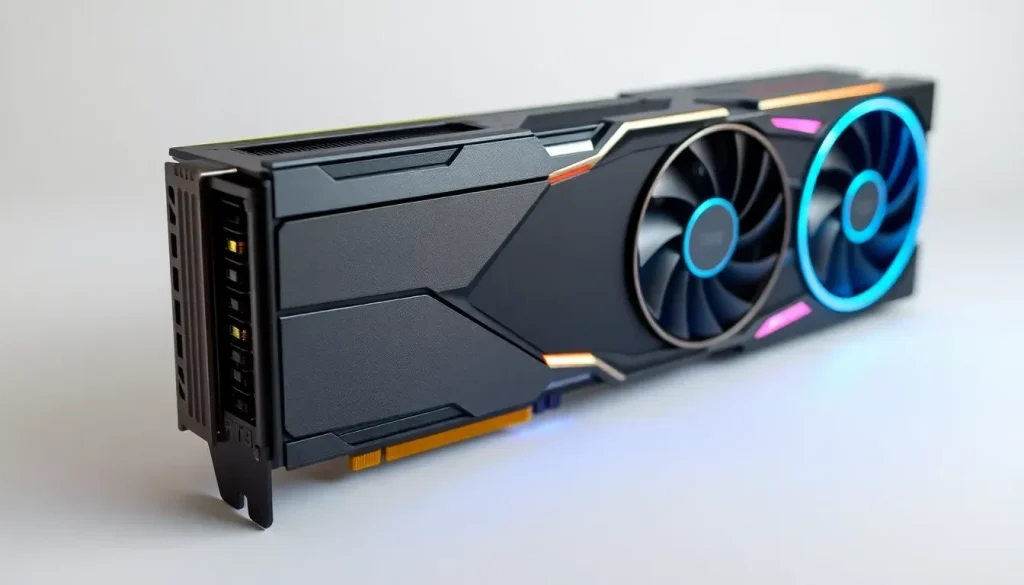Another MSI RTX 5090 fails despite safety 12V-2x6 connector

The evolution of graphics cards has been marked by significant increases in power consumption, particularly in the high-end segment. This trend has raised concerns about the reliability and safety of these powerful components. Among the latest models, the NVIDIA RTX 5090 stands out not only for its performance but also for a troubling pattern of failures that leaves many users worried about the longevity of their investments.
As the demand for higher graphical performance grows, users are left wondering about the implications of these advancements. The RTX 5090, with its impressive capabilities, is a prime example of cutting-edge technology, yet it is also plagued by serious issues that cannot be overlooked.
- A new case of an MSI RTX 5090 burning out with the safety connector
- Understanding the MSI yellow safety connector: a flawed solution?
- What connector does the RTX 5090 use?
- Are RTX 5090s melting down?
- How do the new power cables with yellow tips from MSI aim to prevent RTX 50 series GPUs from melting?
A new case of an MSI RTX 5090 burning out with the safety connector
Recently, another MSI RTX 5090 Gaming Trio has succumbed to the infamous overheating issue, despite using the brand's safety connector. This incident highlights ongoing concerns about the reliability of high-performance graphics cards in demanding environments. Users are sharing their experiences on platforms like Reddit, revealing a pattern that cannot be ignored, as evidenced by the burned-out RTX 5090.
The RTX 4090 initially captured attention with its unprecedented performance, nearly doubling the RTX 3090's output. This leap was primarily due to advancements in architecture and manufacturing processes, resulting in a substantial increase in power consumption, reaching up to 450W. However, the RTX 5090 takes this to a new level with a staggering 575W maximum consumption, amplifying the risk of overheating.
Multiple reports indicate that not only official Founders Edition GPUs but also high-end models are experiencing similar failures. This raises a critical question: how can users mitigate the risks associated with such high power demands?
Understanding the MSI yellow safety connector: a flawed solution?
MSI introduced a yellow safety connector designed to ensure proper connection of the power cables to the graphics card. The idea was to provide a clear visual indication that the cable was securely attached. However, it appears that this design may not effectively address the underlying issues causing the overheating.
According to NVIDIA, initial failures were attributed to user error, specifically improper cable connections. As the situation has evolved, it has become clear that the problem extends beyond user oversight. Key factors contributing to the overheating include:
- Design flaws: The combination of the 12VHPWR/12V-2x6 connector capable of delivering up to 600W in a single point on the card.
- Excessive thermal load: The compact design forces heat to concentrate in critical areas.
- Inadequate cooling solutions: Many users report insufficient cooling for such high-performance components.
A user documented their experience on Reddit, noting that after replacing their power supply due to system failures, they discovered that the yellow connector was burned, specifically the pins on the upper section. This anecdote further emphasizes the importance of examining the entire system's design and operation.
What connector does the RTX 5090 use?
The RTX 5090 utilizes the 12V-2x6 power connector, which is designed to accommodate the high wattage demands of the GPU. This connector is pivotal for ensuring that the card receives sufficient power, but it also raises concerns due to its potential to fail under heavy loads. Users must ensure that their power supply units (PSUs) are compatible and capable of handling these demands.
Key specifications of the 12V-2x6 connector include:
- Supports up to 600W of power delivery.
- Requires compatible cables that are properly rated for high wattage.
- Can be a point of failure if not adequately connected.
Are RTX 5090s melting down?
The alarming reports of RTX 5090s burning out have raised the question: are these graphics cards prone to melting? It appears that the answer is a troubling yes. Users have documented instances where GPUs have not only failed but have shown signs of physical damage due to overheating.
Common symptoms of this issue include:
- Failure to power on.
- System crashes or black screens during intensive tasks.
- Visible damage to connectors and components.
These incidents have sparked discussions among users and experts alike, leading to calls for better oversight on manufacturing processes and design standards in the GPU industry.
How do the new power cables with yellow tips from MSI aim to prevent RTX 50 series GPUs from melting?
MSI's introduction of the yellow-tipped power cables was intended to enhance the user experience by providing a more intuitive connection system. However, while the visual cue helps users confirm connectivity, it does not address the fundamental issues that lead to overheating.
To truly mitigate the risks, users should consider the following measures:
- Ensure a high-quality PSU that meets the wattage requirements.
- Monitor temperatures and system performance, especially under load.
- Regularly check the condition of cables and connectors for signs of wear or damage.
As the community continues to share experiences, it is apparent that both manufacturers and users need to adapt to the challenges presented by these powerful GPUs. The stakes are high, and the consequences of overheating can be costly.
For those interested in further exploring the topic, a relevant video titled "¿Por qué las RTX 5090 se están quemando?" provides additional insights into the ongoing issues surrounding these graphics cards. Watch it here:




Leave a Reply